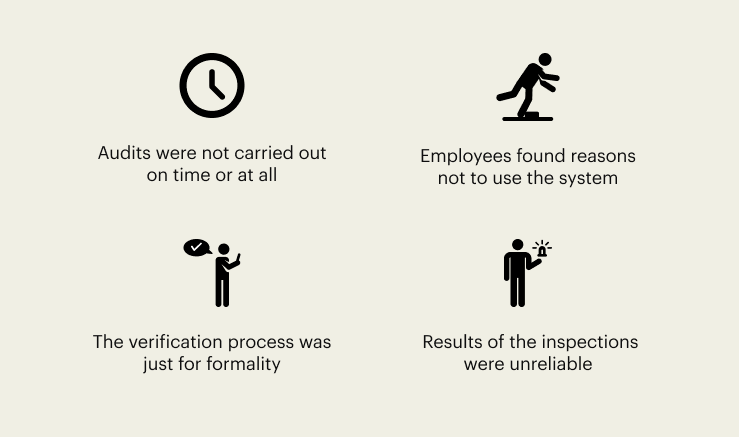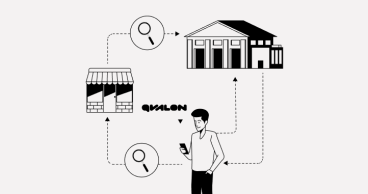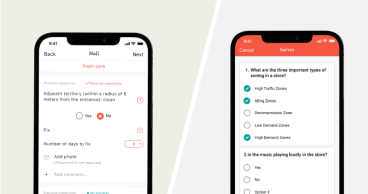Qvalon Blog article content
“It is not the strongest of the species that survive, nor the most intelligent, but the one most responsive to change.“ - Charles Darwin
And the same is true for businesses.
When a business implements a change, the end goal is usually to increase profitability. In some cases, this end goal is obvious. For example, when responsive assessment tools are integrated to monitor workforce efficiency, then it is obvious that the organization wants to spot and work upon poor performances. This directly translates to increased workforce productivity and thereby to business profitability.
In other cases, the obvious end goal is subtle and indirect. Like when a business implements education and training workshops to keep the workforce updated on latest trends. This keeps the workforce proficient and motivated, which again translates to higher productivity and profitability.

Why workforce resist change?
Businesses believe a change that brings positive results will be readily accepted by their workforce. However, it is usually not the case. Some of the main reasons for the workforce’s resistance towards organizational change are:
-
Fear of job loss: Process and technological advancement are for streamlining, working smarter, and efficiently. Staff and managers will resist the changes that result in their roles being eliminated or reduced.
-
Poor communication: If you can’t communicate what, why, how, when, who, and what success will look like, then, expect resistance.
-
Fear of unknown: Some employees may feel the need to cling to the past because it was a secure, predictable time.
-
Loss of control: Familiar routines help employees develop a sense of control over their work environment. Being asked to change the way they operate may make employees feel powerless and confused.
-
Lack of competence: Change in organizations necessitates changes in skills, and some people will feel that they won’t be able to make the transition.
-
Poor Timing: Undue resistance can occur because changes are introduced in an insensitive manner or at an awkward time.
-
Lack of reward: Employees will resist change when they do not see anything in it for them personally. Without reward, there is no motivation to support the change over the long run.
-
Office politics: Some employees resist change as a political strategy to “show or prove” that the change decision is wrong.
-
Loss of support system: Employees may worry about working for a new supervisor, in a new team, or on unfamiliar projects because they fear that if they try and fail, there will be no support for them.
-
Empathy and peer pressure: Stakeholders will resist change to protect the interests of a group, team friends, and colleagues. They could sympathize with their colleagues because of the change that has been thrust at them.
Client faces staff’s resistance against QVALON
One of our clients faced active resistance from the staff while implementing QVALON. It was presumed that everything was done right. The company's structure compiled, checklists prepared, responsible employees appointed and user functions trained. However, despite following all the steps, it didn't work out as expected, leading to the following situations:
-
Audits were not carried out on time or at all,
-
Employees found reasons not to use the system,
-
The verification process was just for formality, and
-
Results of the inspections were unreliable.
After repeated unsuccessful attempts to solve the situation, he asked our methodology department for assistance. We studied the situation, from the manager’s and staff’s perspectives and came to an interesting conclusion that employees were certain that QVALON will bring additional concerns and problems to their work environment.

QVALON builds staff’s loyalty
When our methodology department dwelled further, we found that when the supervisor presented QVALON to the staff, they used seemingly harmless terms: check, audit, monitor, etc. But in the minds of store managers, whose work is evaluated with QVALON, these terms formed a negative attitude towards the system. As per their understanding, the word “check” was associated solely with the process of searching faults in their work.
As per the Cambridge dictionary: CHECK — to make certain that something or someone is correct, safe, or suitable by examining it. Not surprisingly, our client's employees became resistant towards QVALON.
Meanwhile, QVALON’s features are not limited to finding errors and monitoring effects of corrective actions. The main purpose is to identify growth points, to leverage them to increase the efficiency of business processes and company personnel.
So, our methodology department decided to change the terminology of “check” as it does not reflect the true purpose. The term “assessment” is more suitable in this situation. As per the Cambridge dictionary: ASSESSMENT — the act of judging or deciding the amount, value, quality, or importance of something, or the judgment or decision that is made. With this terminology, QVALON becomes a way of evaluating the employee's performance, from being just a troubleshooting tool.
Similarly, the term ‘auditor’, which has authoritarian and controlling perception attached to it, was changed to “manager“ which reflects collaboration, support, and guidance.
After studying the client's problems, our methodology department made the following recommendations on building staff loyalty to the QVALON system:
-
Editing all terminologies which may have negative sentiments attached to them, and replacing them with neutral or positive terms as explained above.
-
Educating employees that the goal of deploying QVALON is to find solutions to optimize the entire company.
-
Making staff aware that QVALON also provides them clear work duties, expected performance levels, quick reporting, and support.
Workforce fears change, not innovation
This episode demonstrated that employees resist only those innovations that they consider harmful to themselves. The important thing is that this presumption may be erroneous. Our client’s staff did not understand the true purpose of QVALON and were confident that it would make their jobs more complex.
The first task in implementing any innovation is to ensure staff loyalty towards it. Following simple steps helps breed that loyalty:
-
Communication: Must be timely, simple, straightforward, and consistent.
-
Lead by example: Higher management has to be fully onboard and demonstrate by their behaviour that they truly care about the implemented change.
-
Proactive assistance: Get early involvement from the specific team members who will be affected by the change.
-
Focus on solutions: Don’t get emotionally caught up in “them against me“ scenarios.
-
Be realistic: The desirable change must be reasonable and attainable for the organization.
At QVALON, we have helped businesses overcome scenarios that could not have been predicted earlier. This has expanded our experience of successfully assisting our clients to navigate such circumstances. We are better positioned with ready solutions for problems you might not foresee now. It is not just about QVALON’s features, but also about the support services available for you. Let’s connect to discuss your business goals and how QVALON can best assist in achieving them.


